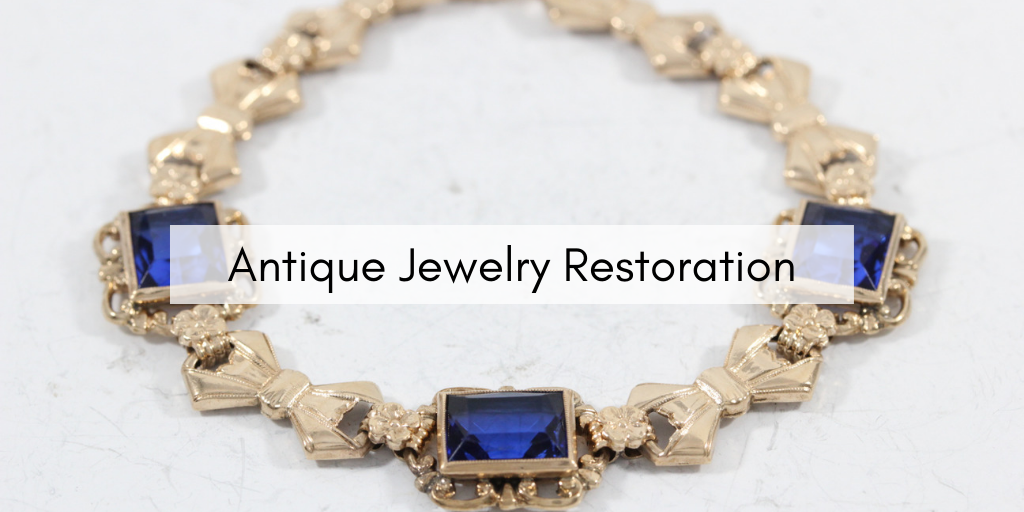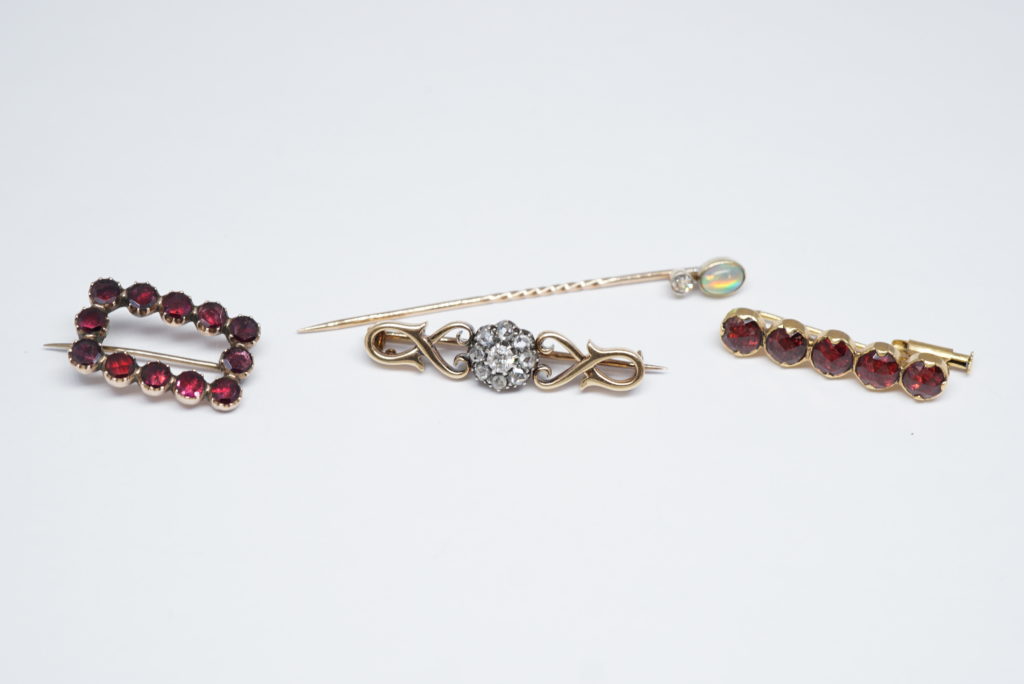What Is a Gemstone Appraisal? (And Why Should You Get One)
Written by Annabelle
April 19, 2019
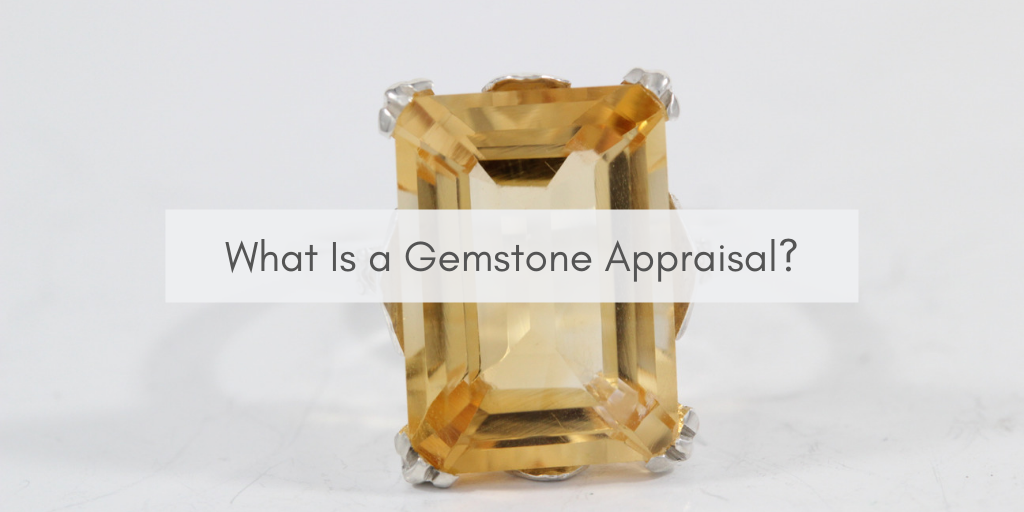
Jewelry appraisals are commonly used for a variety of reasons, such as determining the retail value and keeping record for insurance policies. That's not all they're good for, however; appraisals of your special gemstones can provide a lot of useful information. Read on to find out what you can learn from a gemstone appraisal.
5 Factors of a Gemstone Appraisal
When a piece of jewelry is first sent to an appraiser, the item is shown to a gemologist. This individual is a specially-trained person who is certified by institutions such as the Gemological Institute of America to give professional evaluations on gemstones. With a plethora of jewelry equipment and testing procedures, the gemologist looks at the following:
- Type of Stone: It can be very difficult for a consumer to identify a gemstone on their own- most people will simply make assumptions based off what they know, such as “rubies are red.” The gemologist will first take a look at the gemstone to see if it actually matches the description that was submitted when the jewelry came in for appraisal. It is near-impossible for a gemologist to give an accurate assessment with the naked eye, so the stone is subject to several examinations that test its chemical structures and physical properties.
- Tests:
- Refractive Index: One of the ways to narrow down the possible identities of a stone is testing its refractive index, or how light travels through the stone. Emerald has a refractive index of 1.57 – 1.58, so a green stone that has this index is likely to be an emerald.
- Specific Gravity: The density of a substance compared to a reference material. In gemology, this compares the weight of a stone to an equivalent volume in water.
- Birefringence: Birefringence refers to a stone's natural measurement of how well it polarizes light and splits it into two or three directions. It can also be called the measure of the gemstone's double refraction.
- Optic Sign: Without getting too deep into the physics terminology, an optic sign is a visual pattern of light that is unique to each type of mineral. The gemologist uses a geological petrographic microscope to view this pattern, as it is not eye-visible.
- Pleochroism: Certain gems have the ability to display different colors at different angles. This characteristic is known as pleochroism, and testing a stone for this specific property helps to identify the gem.
- Ultraviolet Light Fluorescence: Some stones will display a certain color when exposed to UV light. A tricky thing to note is that some enhancing treatments will react to UV light- the gemologist will need to pay attention to see if the actual stone is fluorescent.
- Synthetic Stone Identification: Synthetic, or man-made gemstones, are commonly confused by the public as “fake.” While they are not created by natural means, synthetic gems actually have the same chemical and physical properties as a natural gemstone. This makes it difficult for the gemologist to determine whether or not the stone is natural via the standard tests, since the gem will exhibit the same responses. Certain growth patterns and inclusions can help differentiate synthetic stones from natural ones.

Synthetic stones, such as this sapphire, are very common in jewelry due to their cheaper value for large sizes
- Tests:
- Color: Assessing color is dependent on a case-by-case basis. The gemologist has to evaluate several things when examining a stone's color:
- Treatment: Gemstones can be enhanced with various treatments, such as heat exposure or radiation, to display a brighter and better color. While these treatments improve the look of the stone, it reduces the market value in comparison to stones that are naturally colored. A gemologist can rely on several factors such as physical characteristics to determine if a gemstone has been treated. As an example, rubies that have not been subject to extremely high heat may retain rutile inclusions.
- Market Grading: Every type of gemstone has its own grading scale for color. For instance, top-tier rubies are vibrantly red, compared to lower-grade rubies that have orange or pink tints. The closer the stone is to the market standard, the more valuable it is.
Certain stones may also come in rare colors, such as padparascha sapphires which are an orange-pink compared to the standard blue. These exotic colors are also subject to pricing variations depending on demand.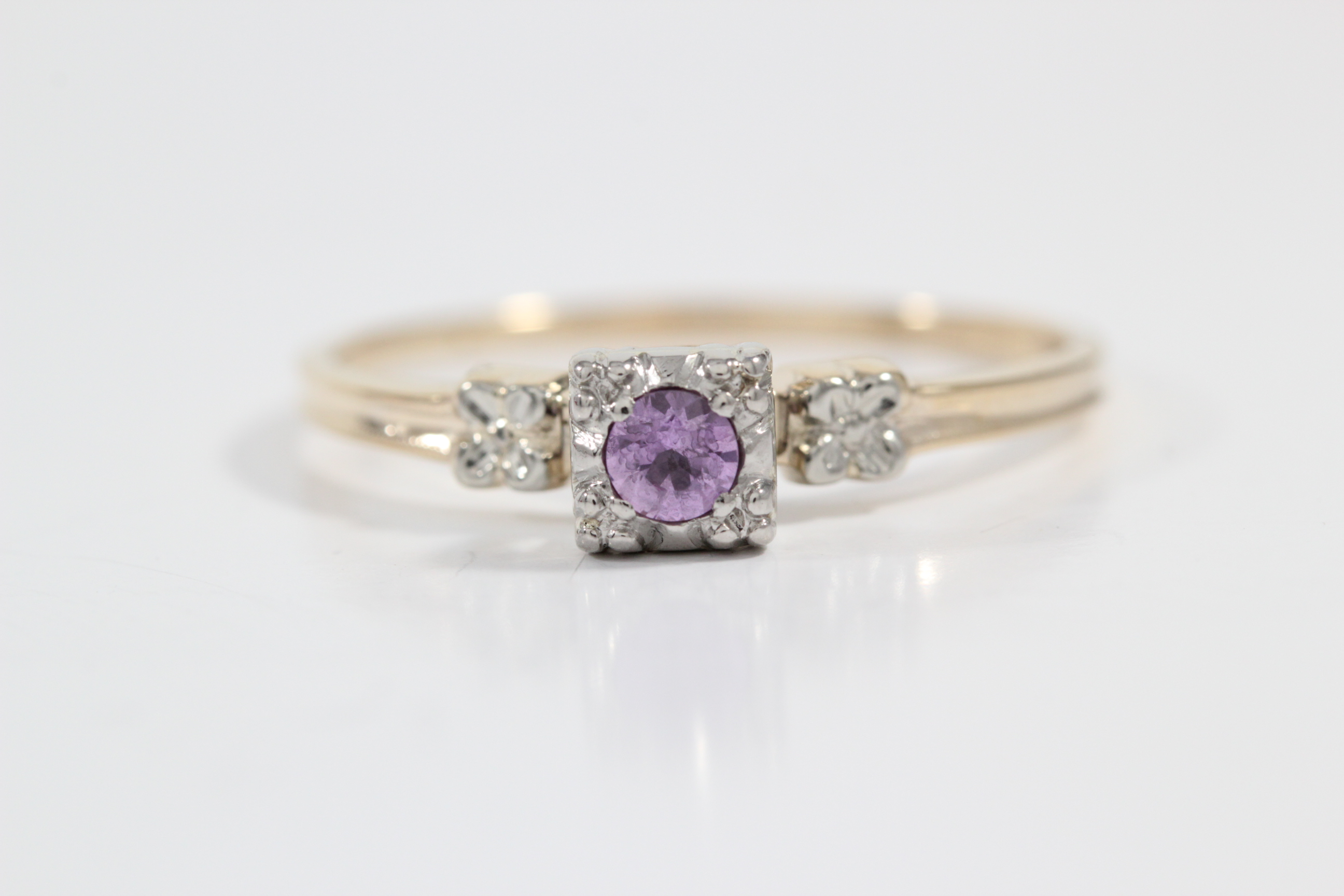
This pink sapphire is an interesting gem- sapphire and ruby actually are the same type of stone (corundum), but rubies must be a particular color in order to be called a ruby. Anything lighter, and it's called a pink sapphire.
- Clarity: The clarity of a stone refers to how many inclusions and blemishes it contains. A common misconception is that this term only applies to diamonds, or transparent stones. This is not true! Opaque stones such as turquoise can also be graded by clarity, based on the appearance of the surface of the stone. The higher the clarity, the more valuable the stone.
- Treatment: As with color, stones can be treated to enhance clarity. This process is called cavity or fracture filling, and is commonly used to improve the appearance of emeralds. Depending on the extent of the treatment and the material used, it can either pass as a routine industry treatment, or as a fraudulent and unethical practice.
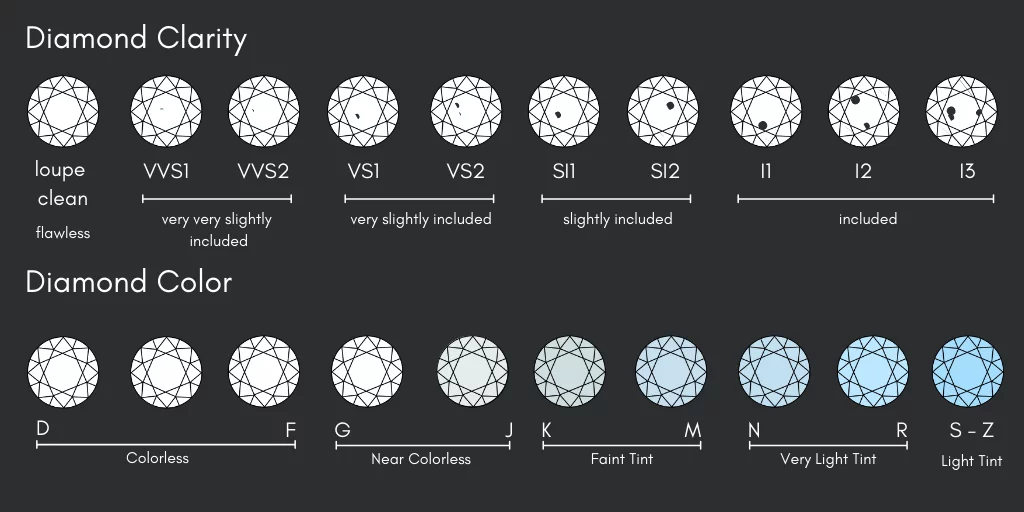
A chart detailing the diamond clarity and color grading system
- Treatment: As with color, stones can be treated to enhance clarity. This process is called cavity or fracture filling, and is commonly used to improve the appearance of emeralds. Depending on the extent of the treatment and the material used, it can either pass as a routine industry treatment, or as a fraudulent and unethical practice.
- Cut: The cut of a stone is often confused with its shape. While it's true that a stone needs to be cut into a particular shape, the term “cut” here actually refers to how well the cut's proportions enhance the stone's natural beauty. The Gemological Institute of America classifies diamond cut grading by seven criteria: brightness, fire, scintillation, weight ratio, durability, polish, and symmetry. The gemologist examines each factor and rates the quality of the cut based on a final aggregate of all the criteria.

The top-down and side view of a standard round cut, complete with terminology.
- Carat Weight & Measurements: The size of the stone is directly proportional to how expensive it is. Stones are measured by carat; 1 carat is equivalent to 0.2 grams. The gemologist measures the carat weight on a scale and divides that number by 0.2, often to the hundredth thousandth for exact precision. Afterwards, the gem's length, width, and height are measured and included in the final report.
Valuation
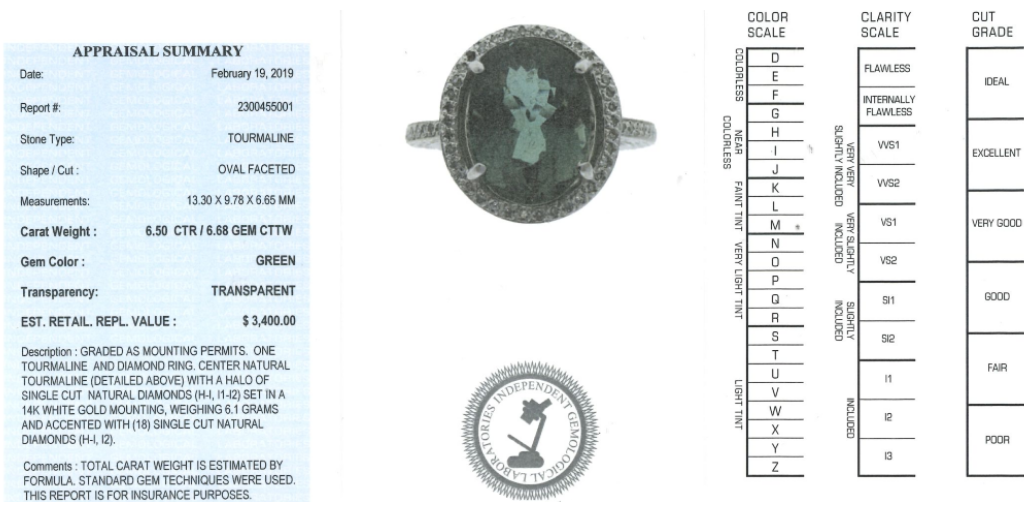
A green tourmaline ring and its appraisal certificate.
Once the gemologist has gathered all the facts in regards to the stone, they proceed to determine the stone's retail value. Comparable stones on the market in terms of quality, size, and color are used for reference. If the gemstone is set in a piece of jewelry, the final retail value includes the mounting and any surrounding accent stones, such as tiny diamonds. This value, along with the other details regarding the center gemstone, is included in the gemstone appraisal certificate.
- Additional Services: On occasion, a gemologist can be asked to provide a professional option on the origin of the gemstone, if there is no existing documentation on the source. The gemologist will examine the stone and compares its physical characteristics to gemstones of the same type from certain locations.
In geology, veins of gemstones exhibit different characteristics based on the surrounding environment. The formulation of these stones is affected by chemicals and elements in the vicinity; for instance, rare color-change sapphires from Thailand and Tanzania get their unique characteristics from chromium or vanadium. The gemologist relies on these distinct properties and cross-references with known sources to figure out the origin of the gem.
Why You Should Get a Gemstone Appraisal
Gemstone appraisals are very useful documents. In the event that you lose your jewelry or it's stolen from you, the appraisal will give you all the necessary details for insurance purposes. It also contains all the information you'll need if you want to recreate the piece.
In addition, having an appraisal for a large and precious center stone is very important if you decide to send your jewelry out for repair. Unscrupulous jewelers are infamous for stone swapping, and the appraisal will allow you to prove that the gem was switched if you suspect that this has happened to your jewelry.
Finding a Good Gemstone Appraisal
There are little to no regulations in regards to appraisals, and many are given by people who do not have the appropriate qualifications. This includes shop jewelers, who may have years of experience in handling jewelry but are not professionally trained to identify gemstones. The best way to find a good gemstone appraisal is to check and see if the individual issuing the appraisal is a graduate gemologist from an accredited organization. Gemologists from the Gemological Institute of America, American Gem Society, and International Gemological Institute are fully qualified to appraise jewelry and gemstones, and your best bet for an accurate evaluation.
Now you're set to go and get a gemstone appraisal of your own! Check out our jewelry appraisal service below.
Services Mentioned In This Article


